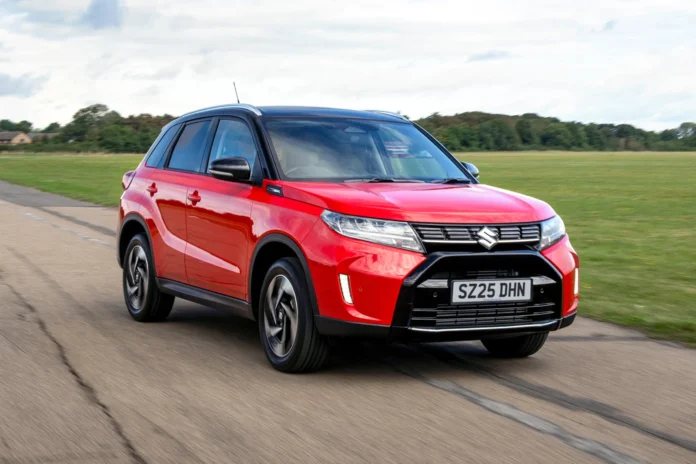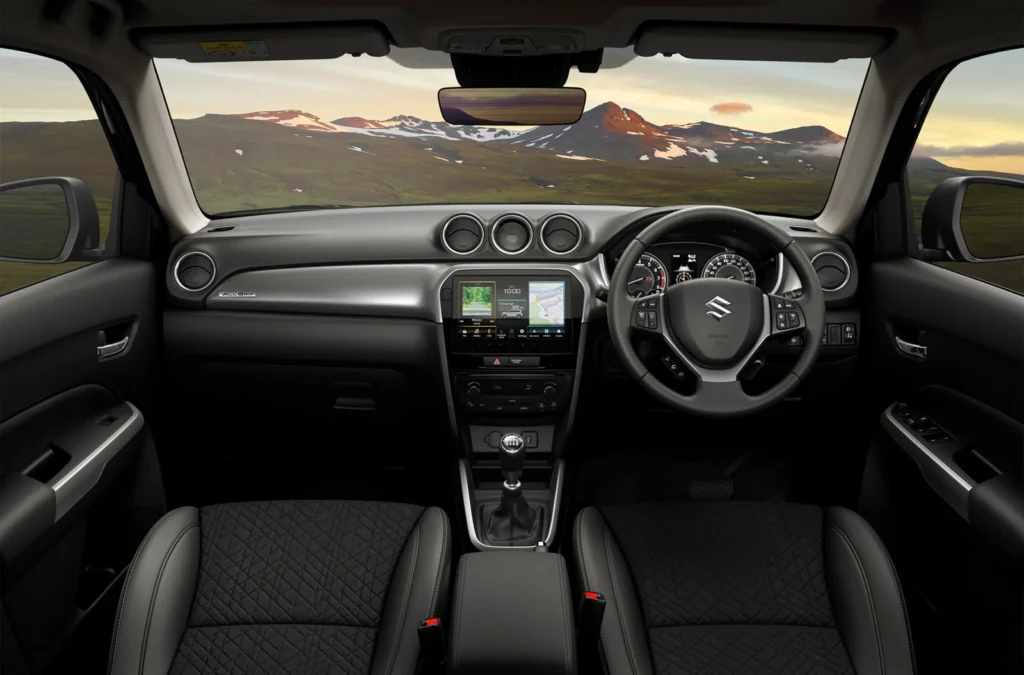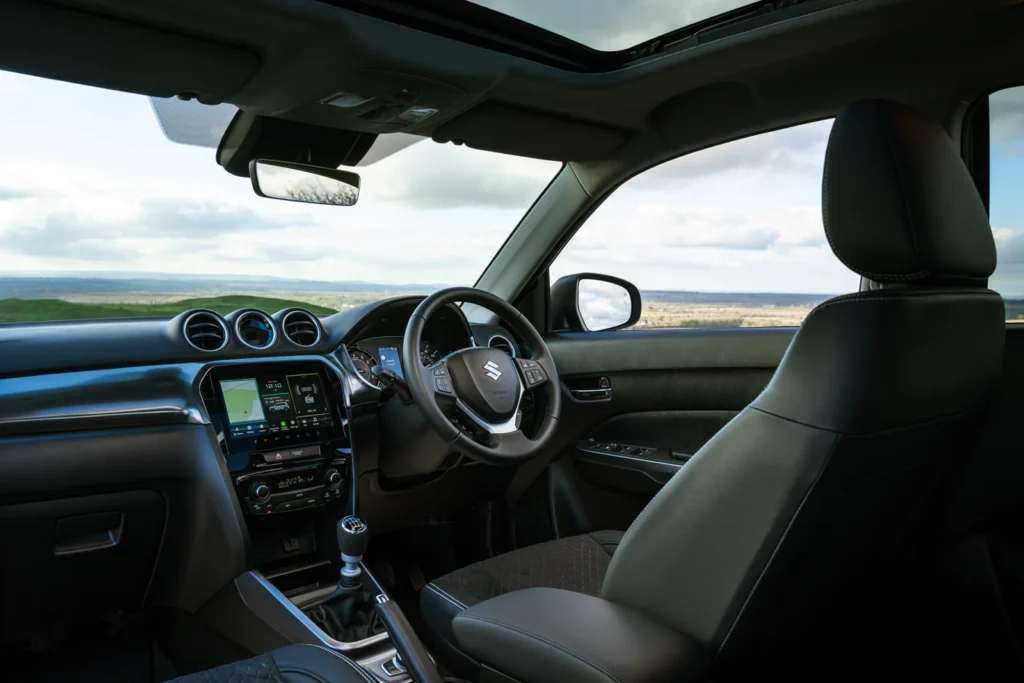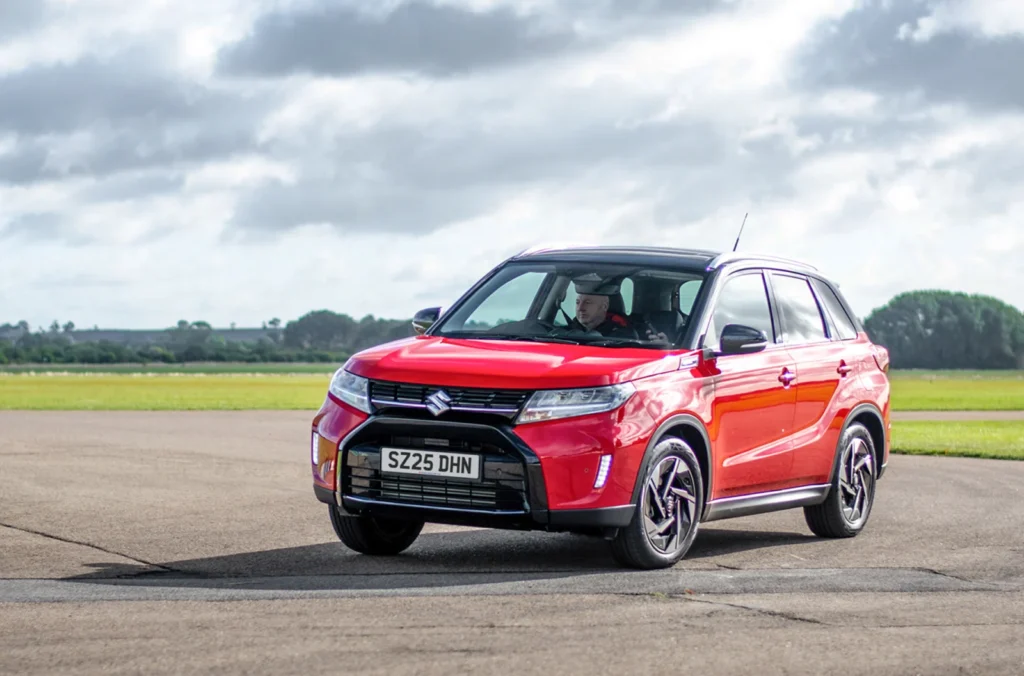
I have driven several electric cars in recent months, so last Monday when I sat into the hybrid petrol version of the Suzuki Vitara, it was like going back in time, but to a very enjoyable time. There were no worries about when I would need to top up the power in my battery or that maybe there will be a queue of taxi drivers in front of me at the next charging point.
Suzuki has a loyal following in Ireland, with an age range reported to include first-time buyers to pensioners downsizing. Nothing wrong with that. If you are a pensioner, you should be rewarded for a life well lived and most people will appreciate a car that is reliable and won’t give you any hassle. Likewise, if you are leaving the Gen Z generation and investing in your first car, you don’t want to be running to a garage every month with some technical issue.
The future is probably electric, but I would advise any young person to learn how to drive in a car with a manual gearbox; then will appreciate the dangers of speeding and also learn how to be courteous to other drivers on the road.

Suzuki introduced their Vitara in 1988 and at that time it was supposed to sit in just above their neat Jimny. Last week I drove the fifth generation of the Vitara, which has been with us since 2015. This is a refreshed version and has got a few slight tweaks at the front, but nothing major. It might be the last petrol version before the inevitable switch to fully electric.
The choice of the name ‘Vitara’ by Suzuki was inspired by the Latin word Vita or Vitality in English. According to the Cambridge dictionary ‘Vitality’ means something that has great energy and liveliness. That is a pretty good summary of what the Vitara has to offer and if you take a test drive, I think you will find a few more positive adjectives to describe this Japanese car, which is made in Hungary.
My test car was a 1.4-litre Boosterjet Hybrid and it came in a lovely shade of red with a black roof, which was very impressive. Inside, there are plenty of good old-style knobs to use the A/C etc. You can adjust the radio controls on the dash or on the slave controls on the steering wheel. And then to top it all off a good old-fashioned handbrake.
Externally, the car looks great; we are often told that red is the best colour when trading in your car. The interior is very bright thanks a full-length sunroof.

The seats are very comfortable, you get a slightly raised driving position, and the back seats passengers sit a few millimetres higher than the front seat passengers. Most new cars now have wireless chargers; the Vitara didn’t, but I liked the fact that I was able to use my home charger for my iPhone in the car.
And you get a decent-sized boot and of course the back seats can be easily folded down to provide more luggage space. No spare wheel, but there is a repair kit. There is also a rear wiper, an item no longer standard in many new cars. Prices start at €31,635, but top of the range all-grip version I drove will cost you €37,135. Road tax is €200.
We haven’t heard much talk in recent months about a date for a full switchover to electric cars in Ireland. Initially the EU suggested 2030, but last year that date was pushed out to 2045.
So, if you are young person and thinking about buying your first car or a pensioner and not ready to switch to a full electric car, have a test drive in this hybrid version of the Suzuki Vitara; I reckon you won’t be disappointed.








